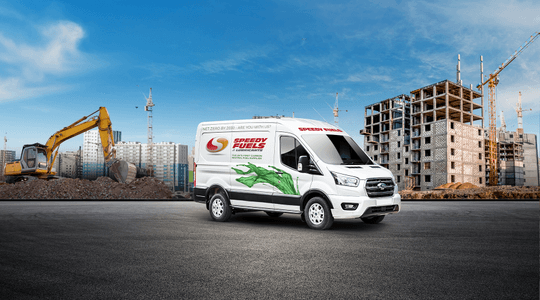As a fuel user, it’s hugely important to be familiar with your tank’s condition and its capacity to avoid a spillage. This blog provides a basic understanding of the different oil tank fittings and what they do.
Oil tanks come in all shapes and sizes
Oil tanks tend to be manufactured from steel or plastic and have various equipment attached/installed to assist safe handling of their contents.
Whatever type of oil tank you have, it’s important to follow the manufacturer’s maintenance instructions or to seek advice from a professional company.

What are the different oil tanks?
Single Skinned Tank
A single skinned tank refers to an oil storage tank that has only one layer of plastic or steel to contain its contents. This type of tank offers the least amount of protection as if the single layer is damaged, oil can easily escape into the environment.
A concrete bund is recommended to hold a single skinned tank which is known as a secondary containment. In some cases, it’s the law to locate a single skinned tank within a bund/secondary containment.
Integrally Bunded Tank
An integrally bunded tank refers to an oil storage tank that’s within an attached larger bund. The integral bund must hold 110% of the inner tank’s contents, including any tank fittings such as the pipes or vents, to provide increased spillage protection.
Double Skinned Tank
A double skinned tank has an inner tank that’s surrounded by an outer larger tank for added strength. However, the outer tank is not big enough to contain 110% of the inner tank’s contents like an integrally bunded tank which means there’s less protection from overfilling or damage to the tank.
Underground Tank
An underground tank is much harder to maintain as in some cases, the only part visible is the hatch providing access to the fill point, contents gauge and vent. It’s much trickier to check for signs of damage, spills and leaks so it’s hugely important to monitor oil levels with an underground tank so you can identify any sudden drops.
What are the different tank fittings?
Fill Point
This is a threaded pipe that’s usually 2 inches or 50mm in diameter that the delivery driver connects onto to fill an oil tank. The fill point can be on the tank or a pipe can be extended to a remote fill location.
All remote fill pipes must have a drip tray to catch any drips that don’t drain in your tank. It’s important to check the drip tray whilst carrying out regular checks on your tank to avoid a spillage.
Vent
A vent releases the vapour and air from an oil tank when being filled. You must keep vent outlets clear to ensure a free passage of air going in and out of the tank. The vent diameter needs to be as big as the fill pipe – so usually 2 inches or 50mm in diameter.
Contents Gauge
A contents gauge is a device that shows the quality of the tank contents that can be wireless, visual or manual.
The reading can be read at the tank, next to the tank or even at a remote location. It must be suitably selected for the correct tank to ensure accurate readings.
Isolation Valve
An isolation valve is also known as the service valve. This fitting is usually found at the outlet of an oil storage tank and shuts off the oil supply from the tank.
Overfill Alarm
An overfill alarm can be either visual or audio and is used to avoid an oil tank being overfilled and causing a spillage. Some alarms can automatically prevent any more oil from entering the tank through a delivery.
Bund
A bund is also known as secondary containment and is an area around the container that’s designed to hold any loss of oil to stop pollution.
It can be contrived as part of an integrally-bund container or constructed separately to the container.
A bund will hold at least 110% of the tank’s contents; this is to allow for any rain water mixing with the oil.
It is often a legal requirement depending where the oil tank is located and what it’s used for. To prevent damage to the environment and nearby properties, we recommend that you consider secondary containment whether it’s required by law or not.
Supply Pipework
Oil supply pipes can be plastic or steel protected to prevent corrosion. Piping installed above ground ought to be maintained by purpose-made clasps and attached to stable structures.
Subversive pipework ought to be secure from physical or inadvertent damage and its path marked with a cautionary tape. If aiding a non-domestic application, it must incorporate a leak-detection facility. Any underground mechanical joints should be accessible for inspection.
To find out the associated regulations with your oil tank, visit our dedicated page fuel storage regulations.
For any further help and advice on the safe storage of oil, give our team a call today on 0330 123 3773 and we’ll be happy to help.

